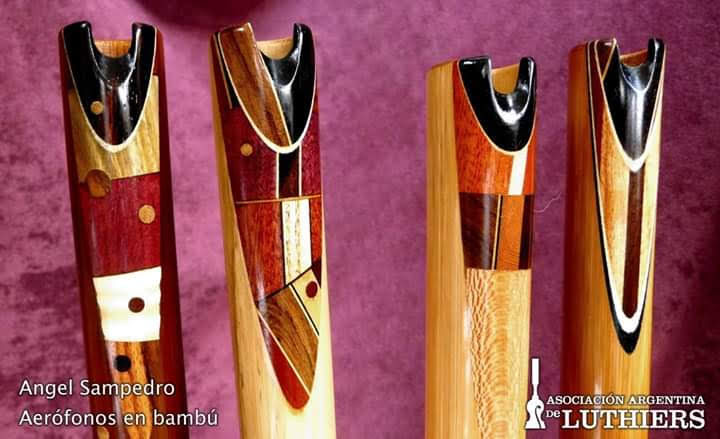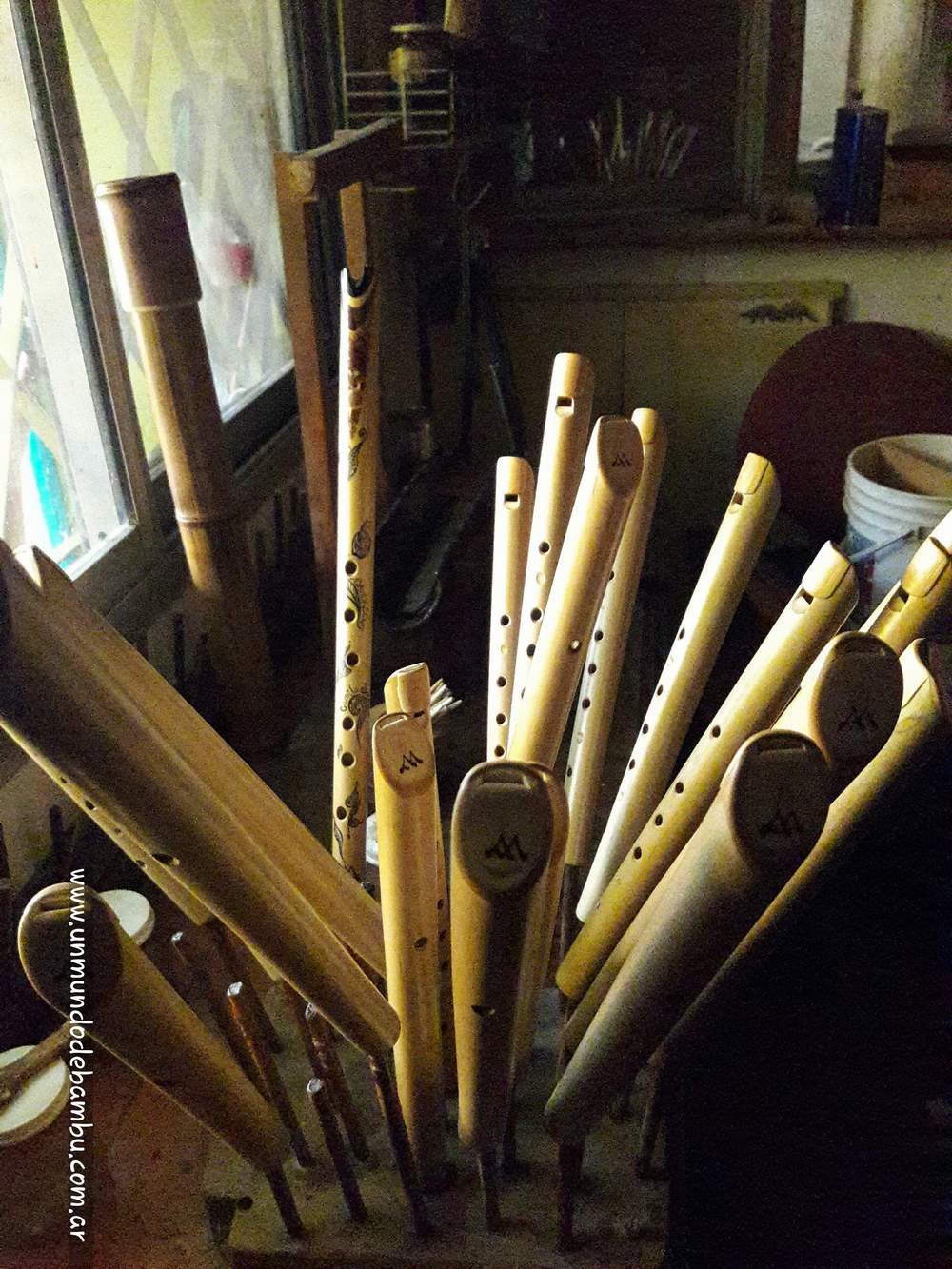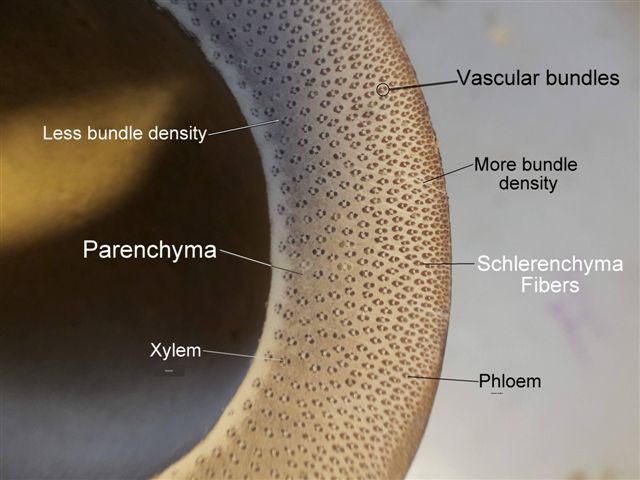|
Advice
for bamboo flute care

by Angel, revised by Karl DeLong Updated Set 2019
Avoid playing the new instrument for long periods. When a
wind instrument is played, the humidity from the air in the
lungs goes into the walls of the instrument. This produces a
localized expansion. When the instrument dries, the walls
contract.
Internal
finishes slow this drying.
New flutes, although made with well-stored bamboo, should
be played in times that are progressively longer That means,
don't play the instrument for a long time the first day you get
it. Ideally, play the instrument 15 minutes the first day, 30
the second, and then increase this time progressively. This practice produces a kind of "fitness" in the
fibers; they change, or cure, together as the humidity changes.
The same is true for instruments that weren't played for long
periods of time.
Dry the instrument after use.
Wind
instruments get some humidity from the lung's air and from
saliva. It is good advice to dry the bore after a long
performance. Use only fine cloths and dowels specifically
designed for that purpose. Avoid introducing strange elements
into the bore to avoid damaging the internal finish.
Use of oils. Several
flutemakers recommend the use of oils (vegetable or synthetic)
to preserve, and to give a better performance with, wooden or
bamboo instruments. The advantages of this procedure
are unclear. It is not
good to oil too frequently. Excess oil, or not fine oils, may
cause bad results by forming a sticky film inside the bore to
which dust adheres. This definitely produces more friction with
the air and therefore less sound power and richness. Some
synthetic oils like silicone, or light ones like almond oil,
correctly used, have shown good results for me.
.
External
care: If the instrument is lacquered, it could be cleaned
with a soft cloth slightly moistened with water, or with 70%
alcohol if some grease is present. Silicone products used for
the plastic parts of automobiles enhance the external brightness
and protect against adherence of dust.
Since I'm making bamboo instruments,
customers ask me about the best way of care for them to prevent
cracks and damage. I often come across statements and
preconceptions about what happens with the bamboo, and with the
sound, thru time. There are people who think that nothing has to
be done with wood and bamboo, allowing them to
"breathe", and people who suggest that they must be
completely sealed (as close as possible) from the environment.
Both thoughts have some merit, and what
procedure should be followed depends on the material that we are
dealing with, the maturity and seasoning, the amount of
humidity, etc.
Instruments made with well-selected,
stored bamboo should not substantially modify their length,
diameter or wall thickness. Since initial humidity has been
lost, and the instrument has reached an equilibrium with the
environment, a gain or a loss of water doesn't result in large
enough changes to affect the pitch of a flute.
I can say, indeed, that bamboo might
crack longitudinally due to a humidity exchange with external
air, or from some internal tensions in the walls. Remember that
when the flutist blows
air into the instrument, this air has a different composition
than that in the atmosphere, both in carbon dioxide content and
in water vapor, and is almost always at a different temperature
than the open air. Add to that the saliva (liquid water), which
of course varies with the performer (and among instruments).
It is normal for a wood or bamboo to have
periodical changes in its degree of humidity. In last instance,
the constant of the weather always changes. The problem comes
when this change happens very quickly, and/or when different
sectors of the wood structure have different changes. This
happens in a flute, since the inner wall is in contact with
lung's air and its water content and the outer wall is not.
It is important that the change of
humidity happens in a more gradual way. Nitrocellulose sealant
(and lacquer in some models) applied by immersion, as I do with
my wind instruments, plays exactly this role.
What is more, nitrocellulose
has a compatible molecular structure with wood and bamboo.
It is absolutely non toxic when dry (no fumes or solvent
retention), and sustainable produced (cellulose based, not oil
derivative)
Nitrocellulose is dissolved
in a complex solvent, and each coat of lacquer dissolves some of
the previous one. For this reason, successive coats are fully
compatible between each other, making an homogeneous finishing.
I have noticed
that for catching the eye (say, for commercial reasons), many
makers put on only external varnish or lacquer layers. At no
time have I heard about any research or justification for this
procedure for either practical or acoustic reasons.
Finishing wind instruments must be
thought of in a functional way, say, that it helps for the
utility, playability or enhancement of the sound of them.
The inner bore, the mouthpiece or
embouchure, and the rims of toneholes are the parts more exposed to
humidity, and the finishing in these areas should be done with
special care. Applying varnish only to the more
visible parts of the instrument is worthless, since they are certainly the lest
risky zones.
|
 |
|
Flutes and quenas
just sink on nitrocellulose lacquer, waiting to dry. |
Also, the finishing layer should be hard,
but porous enough to allow the passage of humidity, and at the
same time elastic to change with the eventual dimensional
changes of the instrument, as nitrocellulose is.
Thus, the material of the instrument and
the type of finishing properties should be known. In bamboo, the
structure is composed of 3 basic elements:
1)
vascular bundles -known as "fibers",
darker in color,
2)
the parenchyma, a clear-colored tissue that
sorrounds the
vascular bundles, and
3)
the skin, or epidermis, that is a semi-waterproof
external covering.
Some bamboo species have amounts of wax in the skin that
might be melted with a gas torch and used either to protect or
to beautify the piece.
|
 |
|
Structure of
bamboo, that shows the composite material. Photo by
Angel Sampedro del Río |
"Fibers" (vascular elements that
transport the sap) give strength, whereas parenchyma
gives elasticity to the structure. A very fibrous bamboo is
hard, but very probably will crack since it has no elasticity
for eventual contractions. In a piece of bamboo of a certain
species and age, either fibers or parenchyma could be harder, or
softer, or more or less elastic, compared with another
bamboo. In all bamboo pieces, vascular bundles are more
concentrated as one goes toward the external surface, since in
the inner surface the parenchyma is dominant.
Thus, as explained above, the inner wall
of bamboo is more prone to absorb water than is its external
wall. Also, the cut ends of bamboo and the walls of toneholes
are more permeable than the external epidermis to liquid or
gases.
Sinking
a piece of bamboo with some holes into water can show this.
Within hours, we will see that water penetrates from the end of
bamboo and from the rims of the toneholes.
Thanks
to Karl De Long and Violeta Sampedro for text revision!!
.
|



